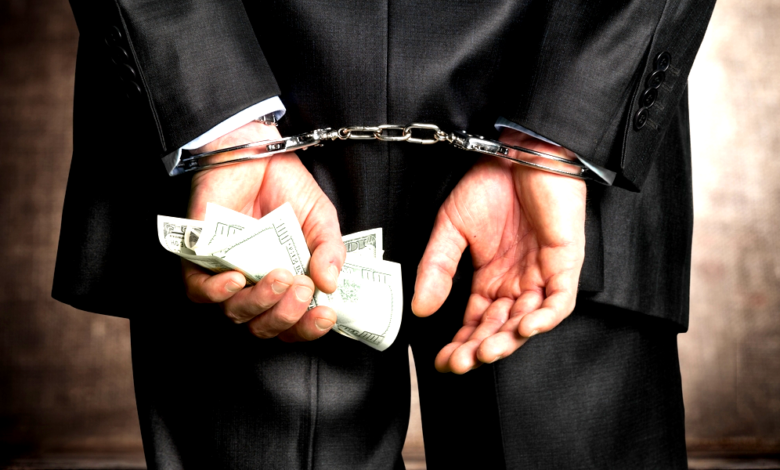
White-Collar Crimes: Fraud, Embezzlement & Legal Consequences
White-collar crimes, such as fraud and embezzlement, represent a significant threat to the integrity of financial systems and corporate governance worldwide.
White-collar crimes, such as fraud and embezzlement, represent a significant threat to the integrity of financial systems and corporate governance worldwide. Unlike traditional crimes, which often involve physical violence or theft, white-collar crimes are typically non-violent offenses committed by individuals in positions of trust, such as executives, managers, or professionals. These crimes are characterized by deceit, concealment, and a violation of trust, often resulting in substantial financial losses for businesses, governments, and individuals. The rise of globalization and technological advancements has further complicated the detection and prosecution of such offenses, making them a pressing concern for legal systems and regulatory bodies.
The focus of this article is to provide a comprehensive understanding of white-collar crimes, with a particular emphasis on fraud and embezzlement. We will explore the various forms these crimes take, the motivations behind them, and the legal consequences faced by perpetrators. Additionally, the article will delve into the broader societal and economic impacts of these offenses, as well as the measures being taken to prevent and combat them. By shedding light on this critical issue, we aim to underscore the importance of ethical behavior and accountability in the corporate world.
White-Collar Crimes: An Overview
White-collar crimes refer to financially motivated, non-violent offenses committed by individuals or organizations, typically in the context of business or professional settings. These crimes are often complex and involve sophisticated schemes designed to deceive victims or exploit systems for personal or corporate gain. The term “white-collar crime” was first coined by sociologist Edwin Sutherland in 1939, who defined it as “a crime committed by a person of respectability and high social status in the course of their occupation.”
Fraud and embezzlement are two of the most common types of white-collar crimes. Fraud involves intentional deception to secure unfair or unlawful gain, while embezzlement refers to the misappropriation of funds or assets entrusted to one’s care. Both crimes rely on the perpetrator’s access to resources and their ability to manipulate systems or individuals for personal benefit. Other forms of white-collar crimes include insider trading, money laundering, tax evasion, and bribery.
The motivations behind white-collar crimes are often rooted in greed, financial pressure, or a desire for power and status. In some cases, individuals may rationalize their actions as a means of achieving success or overcoming perceived injustices. However, the consequences of these crimes extend far beyond the immediate financial losses, eroding public trust in institutions and destabilizing economic systems.
Fraud: Types, Methods, and Impacts
Fraud is a broad category of white-collar crime that encompasses a wide range of deceptive practices. Some of the most common types of fraud include:
Securities Fraud: This involves the manipulation of financial markets or the dissemination of false information to influence investment decisions. Examples include insider trading and Ponzi schemes.
Corporate Fraud: Executives or employees may falsify financial statements, inflate revenues, or conceal liabilities to mislead investors or regulators.
Identity Theft: Perpetrators steal personal information to commit financial fraud, such as opening credit accounts or making unauthorized purchases.
Insurance Fraud: Individuals or organizations may submit false claims or exaggerate losses to receive payouts from insurance companies.
Tax Fraud: This involves underreporting income, inflating deductions, or hiding assets to evade tax obligations.
Fraudsters often employ sophisticated methods to conceal their activities, such as creating shell companies, forging documents, or using digital technologies to cover their tracks. The rise of the internet and digital platforms has given rise to new forms of fraud, including phishing scams, online auction fraud, and cryptocurrency-related schemes.
The impacts of fraud are far-reaching. Victims may suffer significant financial losses, while businesses may face reputational damage and legal liabilities. On a larger scale, fraud undermines confidence in financial markets and institutions, leading to economic instability. Governments and regulatory bodies have responded by implementing stricter laws and enforcement mechanisms, but the evolving nature of fraud continues to pose challenges.
Embezzlement: A Breach of Trust
Embezzlement is a specific type of white-collar crime that involves the misappropriation of funds or assets by someone entrusted with their management. Unlike theft, which typically involves taking property without permission, embezzlement occurs when the perpetrator has lawful access to the resources but uses them for unauthorized purposes.
Common examples of embezzlement include employees stealing cash from their employers, financial advisors misusing client funds, or public officials diverting government resources for personal use. The methods used in embezzlement schemes can range from simple cash theft to complex financial manipulations, such as creating fake vendors or altering accounting records.
The consequences of embezzlement can be devastating for victims, particularly small businesses or non-profit organizations that may lack the resources to recover from significant financial losses. In addition to the immediate financial impact, embezzlement can damage relationships, erode trust, and lead to legal disputes. Perpetrators of embezzlement often face severe legal penalties, including fines, restitution, and imprisonment.
Legal Consequences of White-Collar Crimes
The legal consequences of white-collar crimes are designed to deter misconduct, punish offenders, and compensate victims. Depending on the severity of the offense, perpetrators may face civil, criminal, or administrative penalties.
Criminal Penalties: Individuals convicted of white-collar crimes may be sentenced to prison, with the length of the sentence depending on the nature and scale of the offense. For example, high-profile cases of corporate fraud have resulted in sentences of 20 years or more.
Fines and Restitution: Courts often impose substantial fines on offenders, requiring them to pay back the stolen funds or compensate victims for their losses.
Asset Forfeiture: Perpetrators may be required to surrender assets acquired through illegal activities, such as real estate, vehicles, or financial accounts.
Professional Consequences: Individuals convicted of white-collar crimes may lose their professional licenses, be barred from holding certain positions, or face restrictions on their future employment opportunities.
In addition to legal penalties, white-collar criminals often face social stigma and reputational damage, which can have long-lasting effects on their personal and professional lives.
Prevention and Combating White-Collar Crimes
Preventing and combating white-collar crimes requires a multi-faceted approach involving legal, regulatory, and organizational measures. Governments and regulatory bodies play a critical role in establishing and enforcing laws that deter misconduct. For example, the Sarbanes-Oxley Act of 2002 was enacted in response to major corporate scandals, imposing stricter reporting requirements and accountability measures on companies.
Organizations can also take proactive steps to reduce the risk of white-collar crimes. This includes implementing robust internal controls, conducting regular audits, and fostering a culture of ethics and transparency. Employee training programs can help raise awareness about the risks and consequences of white-collar crimes, while whistleblower protections can encourage individuals to report suspicious activities.
Technological advancements, such as artificial intelligence and data analytics, are increasingly being used to detect and prevent white-collar crimes. These tools can identify patterns of behavior that may indicate fraudulent activities, enabling organizations to take corrective action before significant damage occurs.
Read More: How Bail Works: What You Need to Know Before Paying
Conclusion
White-collar crimes, such as fraud and embezzlement, pose a significant threat to the integrity of financial systems and corporate governance. These offenses are often committed by individuals in positions of trust, who exploit their access to resources for personal gain. The consequences of white-collar crimes extend beyond financial losses, eroding public trust and destabilizing economic systems.
Efforts to prevent and combat white-collar crimes require a collaborative approach involving governments, regulatory bodies, organizations, and individuals. By implementing stricter laws, fostering a culture of ethics, and leveraging technological advancements, we can reduce the prevalence of these offenses and hold perpetrators accountable. Ultimately, addressing white-collar crimes is essential to ensuring a fair and just society where trust and integrity prevail.
FAQs
What are white-collar crimes?
White-collar crimes are non-violent, financially motivated offenses typically committed by individuals in professional or business settings. Examples include fraud, embezzlement, and insider trading.
What is the difference between fraud and embezzlement?
Fraud involves intentional deception for financial gain, while embezzlement refers to the misappropriation of funds or assets entrusted to one’s care.
What are the legal consequences of white-collar crimes?
Perpetrators may face criminal penalties, fines, restitution, asset forfeiture, and professional consequences such as loss of licenses or employment restrictions.
How can organizations prevent white-collar crimes?
Organizations can implement internal controls, conduct regular audits, foster a culture of ethics, and use technology to detect suspicious activities.
Why are white-collar crimes difficult to detect?
These crimes often involve sophisticated schemes, digital technologies, and individuals in positions of trust, making them challenging to identify and prosecute.







